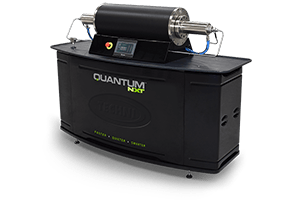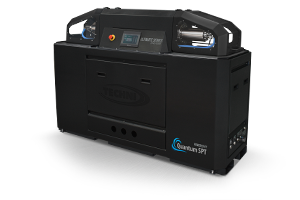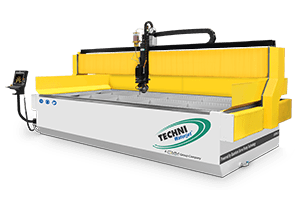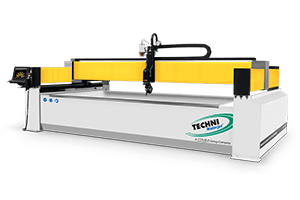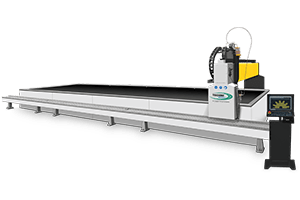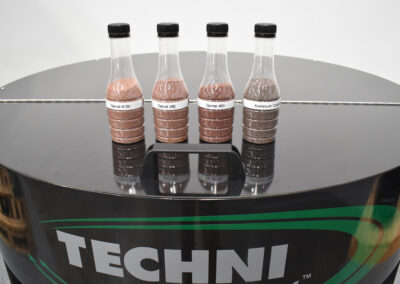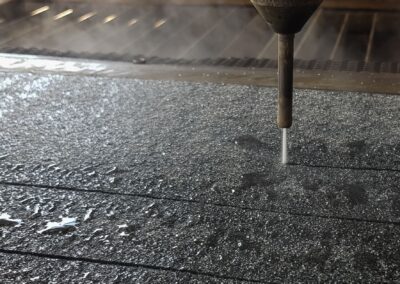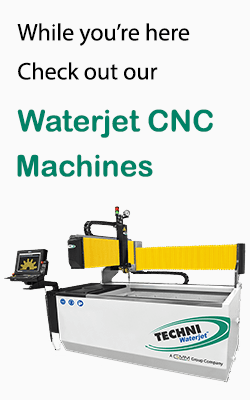Choosing the right cutting technology is a critical decision for any manufacturer, whether you’re working with metals, plastics, or specialized materials. The cutting method you select can dramatically affect your production speed, cost, and the overall quality of your output. With so many options available today, it can feel overwhelming to know where to start. But don’t worry—picking the right solution doesn’t have to be complicated.
The wrong choice can lead to wasted materials, higher costs, and slower turnaround times—none of which are ideal for your business. That’s why it’s crucial to understand how different cutting technologies align with your specific needs.
In this article, we’ll focus on breaking down the key cutting technologies, helping you navigate the decision-making process. We’ll guide you through the factors that matter most—budget, production volume, and cutting quality—so you can make an informed choice that works best for your business.
Does Choosing the Right Cutting Technology Matter?
Selecting the appropriate cutting technology plays a critical role in optimizing your manufacturing process. It directly impacts costs, production efficiency, and the quality of the final product. The wrong choice can lead to increased downtime, excessive maintenance, and material waste, all of which add up over time and reduce profitability.
Precision is a key factor when it comes to certain industries, especially when cutting metals like stainless steel or aluminum. In contrast, some industries require flexibility and versatility in the materials they can cut, which can influence the selection of your cutting machine. Whether you’re working with thick metal sheets or delicate plastics, choosing the right technology will ensure that your operations remain cost-effective and that your cuts are accurate, precise, and quick.
What Are the Main Cutting Technologies?
In manufacturing, selecting the right cutting technology is vital for ensuring precision, efficiency, and cost-effectiveness in production. Various cutting methods are available, each with its unique strengths and weaknesses. By understanding the different cutting technologies, you can make a well-informed decision on the best method for your operations.
Laser Cutting
Laser cutting is a non-contact method that uses a focused laser beam to cut through a variety of materials, including metals, plastics, and ceramics. The laser beam melts, burns, or vaporizes the material, allowing for precise cuts. The technology is particularly effective for thin to medium thickness materials (up to around 25 mm). The cutting process is fast and accurate, and the material does not need to be physically touched by the cutting machine.
Advantages:
- Precision: Laser cutting offers exceptional accuracy and produces clean edges.
- Speed: Laser cutting is fast, especially for thin materials.
Limitations:
- Thickness Limitations: While laser cutting works well for thin to medium materials, cutting thicker materials may require more power and slower speeds.
- Ventilation Needs: Emissions produced during laser cutting require proper ventilation to ensure safety.
- Limited amount of materials laser can cut and limited on the thickness
- Can give off poisonous fumes
- Material distortion due to heat.
- High Initial Investment
Plasma Cutting
Plasma cutting uses an electrically ionized gas, or plasma, to cut through conductive materials like steel, aluminum, and brass. The high-temperature plasma stream melts the material, while a jet of gas blows away the molten metal. Plasma cutting is faster than laser cutting when dealing with medium to thick materials, especially for cuts of approximately 160 mm or less.
Advantages:
- Speed: Plasma cutting is faster than many other methods, particularly for medium to thick materials.
- Cost-Effective: It is generally more affordable than laser cutting for thicker materials.
- Versatility: Works with both ferrous and non-ferrous metals.
Limitations:
- Edge Quality: Plasma cutting can leave rougher edges compared to laser cutting, requiring additional finishing processes.
- Maintenance Needs: Plasma cutting machines require regular nozzle and electrode replacements due to wear.
- Limited amount of materials plasma can cut and limited on the thickness
- Can give off poisonous fumes
- Material distortion due to heat.
Waterjet Cutting
Waterjet cutting process uses high-pressure streams of water, sometimes mixed with abrasive particles, to cut through materials. This method can cut through a wide variety of materials, including metals, plastics, glass, and even stone. It is particularly valuable when working with thick or brittle materials that may be damaged by heat, as there is no thermal distortion.
Abrasive water jet cutting, combines the power of high-pressure water with abrasive materials like garnet to cut through a wide range of materials, including metals, plastics, and ceramics.
Abrasive cutting is particularly useful when dealing with thicker materials or those that are sensitive to heat. The addition of abrasives allows for more efficient cutting in harder materials, offering both precision and versatility.
Advantages:
- No Thermal Distortion: Waterjet cutting generates no heat, so it’s ideal for cutting heat-sensitive materials.
- No Heat-Affected Zones: No hardening or changing the material properties of the cut edge.
- Material Versatility: Capable of cutting almost any material, including thick and brittle substances.
- Precision: Offers high precision, especially for complex contours and intricate designs.
- Able to cut thick materials, up to 300mm/12 inches
- Effective for cutting hard materials, high precision
- Clean and precise cut edge, with no burs or slag to clean up.
Limitations:
- Speed: Waterjet cutting can be slower than other methods,
- Water Management: The cutting process requires clean water, adding additional maintenance steps.
Oxyacetylene Cutting
Oxyacetylene cutting, also known as flame cutting, is a thermal cutting process that uses a combination of oxygen and acetylene gas to melt and oxidize the material being cut. This method is primarily used for cutting ferrous metals, particularly steel, by producing a high-temperature flame that can reach temperatures of over 3,200°C (5,800°F).
The flame is directed onto the material, and the heat causes the metal to melt. Simultaneously, a jet of pure oxygen is applied, oxidizing and blowing away the molten metal, leaving a clean cut.
Advantages:
- High Cutting Thickness: Oxyacetylene cutting can be used to cut materials up to around 300 mm in thickness, making it ideal for heavy-duty applications.
- Cost-Effective: Compared to other cutting technologies, oxyacetylene equipment is relatively inexpensive and easy to maintain.
- Portability: Oxyacetylene cutting machines are mobile and can be used in various locations, making them suitable for on-site cutting jobs.
Limitations:
- Slow Cutting Speed: While effective for thick materials, oxyacetylene cutting is relatively slow, particularly when compared to other cutting technologies like laser or plasma cutting.
- Limited to Steel: This method is primarily used for ferrous metals like steel and is not ideal for non-ferrous materials like aluminum or brass.
- Material Distortion: The intense heat from the flame can cause distortion and warping of thinner materials.
Electrical Discharge Machining (EDM)
Electrical Discharge Machining (EDM) is a non-traditional cutting method that uses electrical discharges, or sparks, to remove material from a workpiece. The process involves a series of rapid, controlled electrical discharges between an electrode and the workpiece, causing localized melting and vaporization of the material.
EDM is highly effective for precise cutting of conductive materials such as steel, brass, and copper, with the ability to cut materials up to around 300 mm thick.
Advantages:
- Precision: EDM offers incredible precision, especially for complex shapes and fine details.
- Ability to Cut Hardened Metals: EDM is particularly useful for cutting hardened or tough materials that are difficult to machine using traditional cutting tools.
- Minimal Mechanical Stress: Since EDM is a non-contact process, there is no direct mechanical stress on the workpiece, reducing the risk of deformation.
Limitations:
- Material Conductivity: EDM can only be used with conductive materials, limiting its application to metals like steel and copper.
- Slow Cutting Speed: While highly precise, EDM can be slow, especially when cutting thick materials.
- Electrode Wear: The electrodes used in EDM can wear down over time and require replacement, leading to additional costs.
CNC Cutting
CNC (Computer Numerical Control) cutting is an automated cutting process that uses a computer-controlled machine to precisely cut materials. This method can incorporate various cutting technologies, including laser cutting, plasma cutting, and waterjet cutting, into a single system.
The key advantage of CNC cutting is its ability to deliver high precision, especially for high-volume production. CNC cutting machines are programmed with specific instructions, allowing them to consistently produce identical cuts with minimal human intervention.
Advantages:
- High Precision: CNC cutting machines offer exceptional accuracy and repeatability, making them perfect for complex designs and high-volume production.
- Automation: CNC cutting is often integrated with other cutting technologies like laser or plasma, enabling automation and increasing productivity.
- Versatility: CNC cutting can handle a wide range of materials, from metals to plastics, and can execute intricate patterns with ease.
Limitations:
- High Initial Investment: The cost of purchasing and setting up a CNC cutting system can be significant, which may be a barrier for small businesses.
- Maintenance Needs: Like all automated systems, CNC machines require regular maintenance to keep them running efficiently and avoid downtime.
- Complexity: Programming a CNC machine can require specialized knowledge and skills, which may require additional training for operators.
Knife Cutting/Knife Plotter
Knife cutting, often referred to as knife plotter cutting, is a cutting process that uses a mechanical knife to cut through various soft materials. This method involves a cutting tool (the knife) that moves over the material in a controlled manner, following pre-programmed paths.
Knife cutting is ideal for applications requiring high accuracy and intricate shapes, especially for materials like fabric, leather, cardboard, and foam, typically up to around 50 mm in thickness. The technology can be easily integrated into production lines with automated controls for faster processing.
Advantages:
- Precision: Knife cutting delivers high accuracy, which makes it suitable for delicate and detailed designs.
- Versatility: It can be used on a wide range of materials, making it a flexible option for various industries.
- No Heat-Affected Zones: Since this is a mechanical cutting process, there is no heat generated, reducing the risk of distortion or material warping.
Limitations:
- Knife Wear: The knives used for cutting can wear out over time, requiring periodic replacement to maintain cutting quality.
- Fraying: In materials like textiles, fraying at the edges can occur, which may require additional finishing steps.
- Vacuum Table Requirement: For certain materials, a vacuum table may be needed to prevent the material from slipping during cutting, adding an extra setup step.
Sawing
Sawing is one of the most traditional cutting methods, commonly used for cutting wood, plastics, and metals. The process involves a serrated blade that moves in a back-and-forth motion, using teeth to gradually cut through the material.
It is often employed for straight cuts, making it particularly useful for industries where simple shapes are needed, such as in construction or prototype production. While sawing is effective for a wide range of materials, it is more commonly associated with wood and plastics.
Advantages:
- Simple and Reliable: Sawing is a proven, dependable method for straight cuts.
- Cost-Effective: It is a low-cost method with minimal setup and maintenance requirements.
- Suitable for Prototypes and Small Batches: Ideal for both small-scale production and large-volume cutting needs, making it versatile for different business sizes.
Limitations:
- Produces Chips: Sawing creates material chips that need to be cleaned up after cutting, which can add time to the overall process.
- Limited to Straight Cuts: Sawing is primarily suited for straight-line cuts, making it less flexible for complex or curved shapes.
- Less Precision: Compared to other cutting technologies like laser or knife cutting, sawing may not deliver the same level of precision, especially for finer details.
Die Cutting
Die cutting is a versatile and widely used cutting process in industries that require the mass production of specific shapes or designs. This method uses a steel rule die to cut materials such as cardboard, foils, textiles, and other non-metallic sheets.
The die acts like a large, sharp knife that presses down onto the material, precisely cutting it into the desired shape. Die cutting is particularly useful for industries like packaging, automotive, and textiles, where high throughput and consistency are essential.
Advantages:
- High Throughput: Die cutting can produce large quantities of identical parts in a short amount of time, making it ideal for mass production.
- Cost-Effective for Large Runs: Once the die is prepared, the cutting process is fast and cost-efficient, especially for high-volume production.
- Versatility in Material Types: It works well on a variety of materials, including paper, cardboard, plastic, and textiles.
Limitations:
- Customization Limitations: While die cutting is excellent for high-volume runs, it is less flexible when it comes to customization. Modifications often require creating new dies, which can be time-consuming and costly.
- Die Preparation Time: Preparing the die for each new design can take time, adding to the initial setup costs.
- Material Restrictions: Die cutting is typically limited to flat, non-metallic materials, so it is not suitable for cutting metals.
Ultrasonic Cutting
Ultrasonic cutting uses high-frequency ultrasonic vibrations to cut through materials. A transducer generates ultrasonic waves, which are directed through a cutting tool that vibrates at high speeds.
This process reduces the amount of force required to cut the material, making it particularly useful for soft or sensitive materials like rubber, plastics, and textiles. Ultrasonic cutting is known for its clean, precise cuts with minimal material distortion.
Advantages:
- Clean Cuts: Ultrasonic cutting provides precise and clean edges, making it ideal for materials that require high-quality finishes.
- Low Heat Generation: The ultrasonic vibrations generate little heat, which helps prevent material deformation or melting.
- Efficiency: This method is fast and efficient, suitable for both small and large production runs.
Limitations:
- Material Limitations: Ultrasonic cutting is primarily suitable for soft, flexible materials and is not effective for cutting harder materials.
- Initial Setup Cost: The equipment required for ultrasonic cutting can be expensive, particularly for smaller businesses.
- Tool Wear: While less than other methods, the cutting tools can wear over time and need to be replaced.
Mechanical Shearing (H3)
Mechanical shearing involves the use of a cutting tool to slice through materials like metal or plastic. The process relies on the application of force to a material, creating a clean, precise cut.
While mechanical shearing is efficient for large-scale production and materials like sheet metal, it can be limited when it comes to thicker or harder materials. One significant advantage is its simplicity and speed, making it ideal for straight cuts in large volumes. However, it may struggle with more intricate designs or thicker metals.
Advantages:
- Cost-effective for high-volume cutting, ideal for straight lines and simple shapes.
Limitations:
- Limited flexibility for intricate designs or cutting thicker materials.
Rotary Cutting
Rotary cutting is typically used in applications requiring continuous, smooth cuts through flexible materials such as fabrics, foams, or paper. It involves a rotating blade that moves in a circular motion, slicing through materials efficiently.
This technology is often used in textile manufacturing and packaging industries, where precision and speed are essential. The main advantage of rotary cutting is its ability to cut curved shapes with ease, but it is limited to softer materials and may not provide the same level of precision or clean edges as other cutting technologies like laser cutting.
Advantages:
- Efficient for continuous cutting of flexible materials, suitable for curves.
Limitations:
- Limited to softer materials, less precision compared to other methods.
Hot Wire Cutting
Hot wire cutting uses a heated wire to slice through materials such as foam, rubber, or plastics. The wire’s high temperature melts the material at the cutting edge, providing smooth, clean cuts.
This technology is frequently used for cutting foam products, including packaging and insulation materials. Hot wire cutting is highly efficient for these materials, and its simplicity makes it a cost-effective option for low-volume or prototype production.
Advantages:
- Ideal for cutting foam, simple setup, cost-effective.
Limitations:
- Not suitable for thicker or heat-sensitive materials.
Chemical Etching/Chemical Cutting
Chemical etching, also known as chemical cutting, is a non-mechanical process that uses chemical reactions to etch or cut through materials, typically metals like stainless steel or brass.
This process involves applying a corrosive chemical to a metal sheet or part, which dissolves the material to form precise shapes.
Chemical etching is favored for applications requiring high-precision cuts, such as creating small, intricate parts or prototypes. It is particularly useful for materials that are hard to machine using traditional cutting methods.
Advantages:
- High precision, ideal for intricate designs, suitable for hard-to-machine materials.
Limitations:
- Limited to thinner materials, safety concerns due to chemicals.
Abrasion Cutting
Abrasion cutting uses a rotating abrasive wheel or belt to remove material from a workpiece. This method is commonly used for cutting hard or brittle materials like ceramics or composites. The abrasive particles act as the cutting tool, grinding through the material with high precision.
One key advantage of abrasion cutting is its ability to produce clean cuts in materials that are difficult to machine using other methods, such as metals with high hardness or delicate materials.
However, it’s generally slower compared to methods like laser or plasma cutting, and the wear on the abrasive tools can increase operational costs over time.
Advantages:
- Effective for cutting hard, brittle materials, high precision.
Limitations:
- Slower process, abrasive tool wear can increase costs.
Flame Cutting
Flame cutting is a thermal cutting process that uses a high-temperature flame to melt and burn through materials, especially metals like steel. The flame is generated by burning a mixture of oxygen and fuel gases, such as acetylene or propane.
Flame cutting is particularly effective for cutting thicker materials that are not easily handled by laser or plasma cutting. However, this method tends to be slower than plasma cutting for certain thicknesses of metal and may result in more heat-affected zones (HAZ) in the material.
Flame cutting is widely used in construction and heavy manufacturing industries due to its ability to handle large metal plates and its relatively low cost compared to other thermal cutting methods.
Advantages:
- Ideal for thicker materials, low cost.
Limitations:
- Slower than plasma cutting for certain thicknesses, larger heat-affected zones.
Punching
Punching involves using a punch and die to create holes or shapes in a material, typically sheet metal. The punch applies force to the material, causing it to deform and create a hole or shape.
Punching is highly efficient for producing parts in large quantities and is commonly used for tasks like perforating metal sheets, creating fastener holes, and producing gaskets.
One of the primary advantages of punching is its speed and cost-effectiveness for high-volume production runs. However, it is not as versatile as other methods like laser cutting when it comes to making intricate or complex shapes.
Advantages:
- Fast, cost-effective for high-volume production, ideal for creating holes.
Limitations:
- Limited in design flexibility, not suitable for intricate shapes.
Friction Saw Cutting
Friction saw cutting is a method that uses a rotating saw blade to generate heat and cut through materials. The high-speed rotation of the blade creates enough friction to melt the material, allowing it to be cut efficiently.
This method is commonly used for cutting metals such as stainless steel and aluminum, especially when high cutting speeds are needed. One of the key advantages of friction saw cutting is its ability to handle large workpieces, such as metal pipes or rods, with minimal setup time.
Advantages:
- High cutting speed, minimal setup time.
Limitations:
- Potential material distortion, faster tool wear.
Sublimation Cutting
Sublimation cutting is a cutting process that uses heat to vaporize materials without going through a liquid phase. This method is primarily used for cutting specific materials, such as polymers, plastics, or certain metals. The heat causes the material to directly transition from solid to gas, avoiding the creation of molten material and reducing thermal damage. One of the main benefits of sublimation cutting is its precision and minimal heat-affected zone, making it ideal for delicate materials that could be damaged by other thermal processes.
Advantages:
- Minimal thermal damage, high precision.
Limitations:
- Suitable for specific materials and thicknesses, not ideal for large-scale production.
Vaporization Cutting
Vaporization cutting is a high-precision process that uses a high-power laser beam to rapidly vaporize material. This cutting method is ideal for thin metals and certain plastics, offering excellent accuracy and minimal thermal impact on surrounding areas.
One of the main advantages of vaporization cutting is the ability to make very precise cuts with clean edges, especially for materials that might be prone to deformation or mechanical stress. However, this method requires high laser power and effective ventilation to handle the vaporized material, making it less suited for thick materials or environments where air quality could become an issue.
Advantages:
- Highly precise, minimal mechanical stress, clean cuts.
Limitations:
- Requires high laser power, ventilation is critical.
Mechanized Cutting Equipment
Mechanized cutting equipment typically refers to CNC-guided systems designed for automated cutting processes. These machines can perform complex cuts with a high degree of consistency and repeatability.
This type of equipment is ideal for mass production, where efficiency and uniformity are essential. Whether using a laser cutter, plasma cutter, or water jet cutting system, mechanized equipment ensures that your cuts are precise and can handle intricate designs with minimal manual intervention..
Advantages:
- Increased efficiency, repeatability, reduced human error.
Limitations:
- High initial investment, ongoing maintenance.
Milling
Milling is a subtractive machining process that uses rotary cutting tools to remove material from a workpiece. The milling machine spins a tool against the workpiece, cutting away material in precise increments. This method is highly versatile and can produce a wide range of shapes, including grooves, bores, chamfers, and even complex 3D structures. Milling is ideal for producing intricate, custom parts, often with high material removal rates. However, milling can cause tool wear over time, resulting in the need for frequent tool changes.
Advantages:
- Can produce complex shapes, grooves, and holes; versatile.
Limitations:
- Tool wear, burr formation, chip cleanup, potential material stress.
How to Choose the Right Cutting Technology for Your Industry?
The decision-making process involves understanding your specific business needs, production volume, and material types. Technologies like laser cutting, plasma cutting, and water jet cutting each have their strengths and weaknesses depending on your industry’s requirements.
You should carefully evaluate your production process, the cutting speed you need, and the complexity of the parts you plan to cut. Whether you’re dealing with metals, plastics, or other materials, selecting the right cutting technology will directly influence your output quality and your bottom line.
In this section, we will guide you through the key factors you need to consider when making this important choice.
What Factors Should You Consider When Choosing a Cutting Technology?
When choosing a cutting technology, several critical factors should be considered to ensure it aligns with your production goals. These include:
- Material Type: Different materials require different cutting methods. For instance, thin metals may perform better with laser or plasma cutting, while heat-sensitive, thicker or hard materials like stone or Titanium might be better suited for waterjet cutting.
- Production Volume: High-volume production may demand cutting systems that can operate continuously, such as CNC-guided systems.
- Cutting Speed and Precision: If your products require intricate cuts, technologies like laser cutting may offer superior precision.
- Cost Efficiency: Consider both the initial investment in the cutting machine and the long-term operating costs, including maintenance and consumables.
- Material Thickness: The thickness of the material will determine which technology is best suited for your needs, with plasma cutting being ideal for thick metals and laser cutting for thinner materials. Waterjet can handle thicknesses over 300 mm with good edge quality and no heat distortion.
Material Type
The material you’re working with plays a significant role in determining the most suitable cutting technology. Different materials require different tools and processes.
For instance, metals like steel, stainless steel, and aluminum are often best cut using high-powered technologies like laser cutting, plasma cutting, or water jet cutting.
On the other hand, non-metal materials such as plastics and wood might require methods like laser cutting, water jet, or even traditional saws and knives.
Which Cutting Technology Is Best for Your Material?
Understanding the compatibility of your materials with various cutting technologies is essential to making a decision that optimizes both cost and quality. This ensures you achieve precise cuts, avoid unnecessary waste, and maximize production efficiency. Each material has specific compatibility with certain cutting technologies. Here’s a breakdown of the best options for different material types.
Metals
When working with metals, you have several options depending on the material’s thickness and hardness:
- Mild Steel: Plasma cutting works well up to about 160mm thickness, and laser cutting can handle up to 25mm.
- Stainless Steel: Laser cutting is ideal for thinner sheets, but plasma and Waterjet cutting can be used for thicker gauges.
- Aluminum and Copper: Laser cutting and water jet cutting are often best for aluminum and copper materials due to the heat sensitivity of these metals.
- Brass and Titanium: These materials can be cut using plasma, laser cutting or waterjet, depending on the thickness.
- Nickel Alloys: Plasma, waterjetcutting and EDM (electrical discharge machining) are suitable for thick nickel alloys, while laser cutting works well for thinner sections.
- Galvanized Steel: Plasma cutting handles thicker sections well, laser cutting is more effective for precision in thinner sheets,waterjet will not give off any poisonous Galvanized fumes.
Non-Metals
Non-metals such as plastics, rubber, and wood are often best suited for specific cutting technologies:
- Plastics (Acrylic, Polycarbonate, PVC): Laser cutting provides clean edges for precise cuts in plastics, while water jet cutting can also be effective, especially for thicker plastic sheets.
- Rubber: Water jet cutting and laser cutting are both ideal for rubber materials, as they prevent heat buildup that could affect the material.
- Wood: Sawing works well for wood cutting, though laser cutting and milling may be used for intricate or complex shapes.
Natural Materials
For natural materials like leather and stone, the following technologies work best:
- Leather: Laser cutting offers precision, while water jet cutting and knife cutting are also viable options.
- Stone (Marble, Granite): Water jet cutting is the most effective method for cutting stone, especially for thick or brittle materials.
Composites
Composites like carbon fiber and fiberglass can be cut using:
- Laser cutting: Works well for precise cuts in composites.
- Water jet cutting: Another good choice, especially for thick or intricate composite parts.
- Milling: Ideal for complex shapes or detailed designs in composites.
Fragile and Brittle Materials
When cutting fragile or brittle materials like glass and ceramics, water jet cutting is often the best choice. It avoids the thermal damage that other cutting methods could cause, ensuring clean and precise cuts.
Soft and Flexible Materials
For soft and flexible materials like foam and textiles, both knife cutting and water jet cutting are effective. Knife cutting is ideal for materials with multiple layers, while water jet cutting provides precision without heat distortion. Laser cutting can also be used for more intricate designs.
Paper-Based Materials
When working with paper and cardboard, die cutting or knife cutting is the preferred method for high-volume production. For more detailed or intricate cuts, laser cutting works well, providing precise results without fraying edges.
Material Thickness
Different cutting technologies handle material thickness in unique ways. For example:
- Laser cutting: Effective for materials up to ~25 mm in thickness, particularly metals like stainless steel.
- Plasma cutting: Can handle thicker materials, up to around 160 mm for metals.
- Oxyacetylene: Ideal for cutting up to 400 mm of steel.
- Waterjet cutting: Handles a wide range of thicknesses and materials, up to ~300 mm, but practically cuts best around 200 mm.
- EDM: Works well for conductive materials, offering cuts up to ~300 mm thick.
Required Precision and Tolerance
Precision and tolerance are crucial when selecting a cutting technology. Laser cutting and EDM are excellent choices for high-precision applications, offering fine detail and accuracy in cuts. Waterjet cutting is also a strong option, especially for intricate shapes, and is particularly useful when minimal distortion is needed. The right choice will depend on how tight the tolerance needs to be for your specific project.
Production Volume
For industries that require mass production, methods like die cutting and mechanized systems are ideal. These technologies provide high throughput and efficiency, ensuring that your production volume stays on track without sacrificing quality. However, if you’re working with small production runs or prototypes, manual methods like knife cutting and saw cutting may be sufficient, providing flexibility and lower costs while maintaining decent quality.
Speed of the Cutting Process
Speed can make or break your operation, especially when time is a critical factor. Plasma cutting and laser cutting are both fast technologies, capable of handling large volumes of material quickly. Waterjet cutting, however, can be slower, particularly when dealing with more complex shapes. Oxyacetylene cutting is relatively slow, making it less suitable for high-speed operations but an option for thicker materials.
Cost of Equipment and Operation
The cost of your cutting technology will depend on both the initial investment and ongoing operational expenses. Plasma and waterjet cutting systems tend to have moderate costs and are often favored for their ability to handle a wide range of materials. However, laser cutting and EDM machines tend to come with higher upfront costs but can deliver more efficiency in the long run. Die cutting, while more affordable for larger production runs, requires specialized dies, which can add to the costs.
Energy Efficiency
Energy efficiency is another important consideration when selecting cutting technology. Laser and plasma cutters can be energy-intensive due to their high-power requirements. Waterjet cutting systems require high-pressure pumps, which can also consume significant amounts of energy. While these systems provide excellent precision and cutting quality, they may not always be the most energy-efficient option.
Type of Cut Desired (e.g., clean edges, intricate designs)
The type of cut you require plays a significant role in selecting your cutting technology. Laser cutting offers extremely clean edges, making it ideal for precise and intricate designs. Waterjet cutting also produces smooth, clean edges without causing thermal distortion, which is important for materials sensitive to heat. Knife cutting, while not as precise as lasers or waterjets, works well for delicate non-metals like fabric and foam, providing a clean and smooth cut without excessive heat or friction.
Post-Cutting Processing Needs
After the initial cut, some materials require additional processing. Depending on your chosen technology, this can vary significantly:
- Plasma, laser and waterjet cutting: These methods typically leave minimal finishing requirements, making them ideal for quick production cycles.
- Saw or milling methods: These may require additional deburring or smoothing to achieve the desired final result.
Scalability for Future Business Needs
As your business grows, your cutting technology should be able to scale with it. Whether you’re increasing production volume or expanding to new materials, your cutting machines need to support these changes.
- Laser cutting machines and plasma cutting offer scalability, particularly when integrated into automated systems, allowing you to increase output with minimal manual intervention.
- More traditional methods like manual saws might require more labor and time to scale, which can limit growth potential.
Industry-Specific Standards and Requirement
Certain industries have specific requirements when it comes to cutting processes, such as aerospace, automotive, or medical devices. These standards can dictate the type of cutting technology that is most suitable. For instance, the precision and cleanliness required in aerospace parts make waterjet, laser cutting or EDM the preferred options. In contrast, for high-speed, large-scale metal cutting, plasma cutting might be more appropriate.
Cutting Speed
Cutting speed can significantly impact your production efficiency. Each technology has its own cutting speed:
- Laser cutting offers high precision but might not be the fastest for all materials.
- Plasma cutting is faster for thicker materials, but it may sacrifice some accuracy.
- Waterjet cutting tends to be slower compared to plasma and laser but offers versatility and is ideal for materials sensitive to heat.
Accuracy Trade-offs
The level of accuracy you need will depend on your specific project. Certain cutting methods excel in precision, while others prioritize speed or material versatility.
Which Cutting Technology is the Most Accurate?
- Laser cutting and EDM (Electrical Discharge Machining) are often the leaders in terms of precision, especially for intricate designs and thin materials.
- Waterjet cutting is also precise but may not achieve the fine tolerances that laser cutting can.
- Plasma cutting, while efficient for thicker materials, typically sacrifices accuracy for speed.
Which Cutting Technology Is Best for Small Businesses vs. Large Enterprises?
For small businesses, cutting technology needs to offer flexibility, cost-effectiveness, and the ability to handle small to medium production runs. Technologies like laser cutting or waterjet cutting can be ideal due to their relatively lower initial investment and ability to process a range of materials. Large enterprises, however, often have the resources to invest in high-end fiber laser cutters or large water jet cutting systems, which are suited for high-volume production and materials requiring exceptional precision.
What is the Best Cutting Technique for Small Businesses?
For small businesses, plasma-cutting technology offers a great balance of precision, versatility, and affordability. It allows for intricate cuts on a wide variety of materials, including metals, plastics, and wood, with minimal setup time. In addition, plasma-cutting machines are relatively user-friendly and have lower operational costs compared to other high-precision options. This makes it ideal for businesses with smaller budgets or those just starting to scale their operations.
What is the Best Cutting Technique for Large-Scale Manufacturing?
For large-scale manufacturers, fiber laser cutting or water jet cutting is often the preferred choice. These technologies provide high-speed, high-precision cutting and are designed to handle large volumes of workpieces, such as sheet metal or stainless steel.
Fiber laser cutters are known for their cutting speed, energy efficiency, and ability to handle thick materials, making them suitable for demanding, high-volume operations. Water jet cutting also offers excellent precision without the heat-affected zones of laser cutting, making it ideal for sensitive materials like plastics or composites.
Conclusion
When it comes down to choosing the right cutting technology, it’s all about understanding your business’s unique needs. If you’re running a small business, you’ll want something that balances affordability and flexibility—laser cutting is often the go-to solution.
It’s perfect for custom jobs, smaller production runs, and still provides the precision you need on a wide range of materials.
On the other hand, large enterprises with high-volume demands will find that fiber laser cutting or water jet cutting offers the speed, scalability, and precision they require to stay competitive.
At the end of the day, the right choice will depend on factors like your production volume, the materials you work with, and of course, your budget. So, take a step back, think about your business goals, and choose a cutting machine that will keep you efficient and on track. Whether you’re a small business or a large enterprise, making the right decision today will lead to better results tomorrow.

